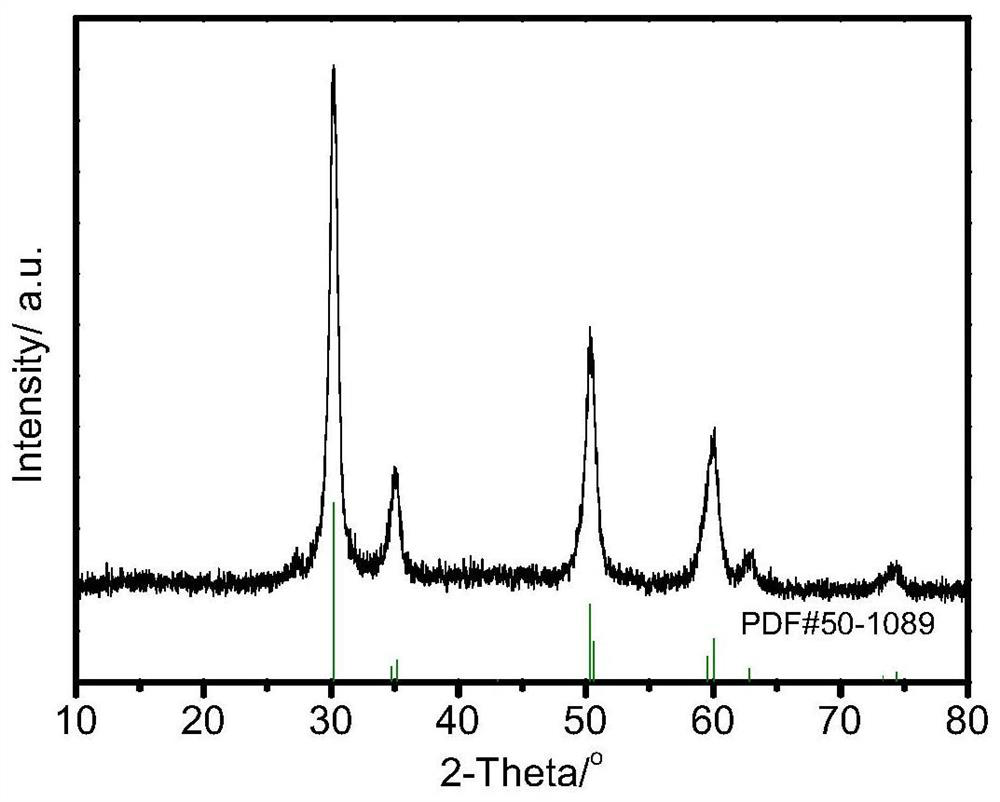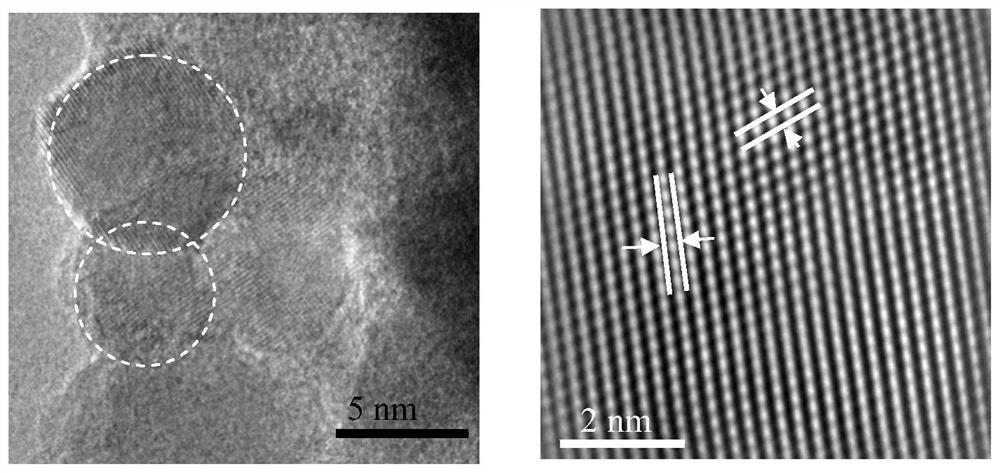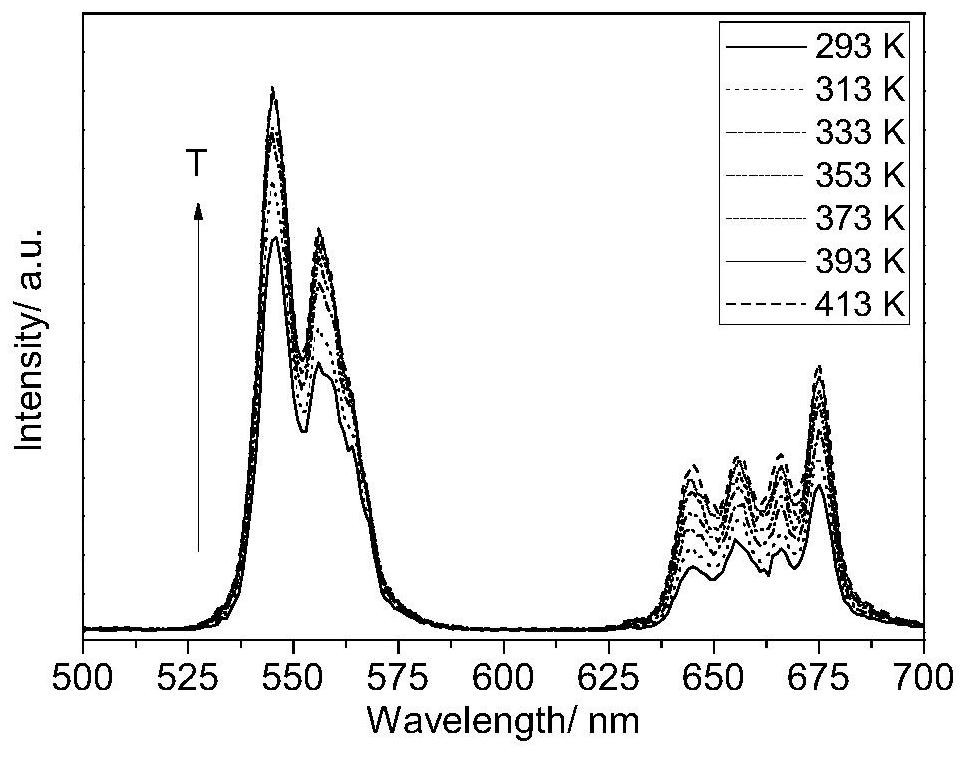A kind of up-conversion luminescent nanocrystal and its preparation method and application
A nanocrystalline and fluorescent technology, applied in luminescent materials, nanotechnology, nano optics, etc., can solve problems such as temperature measurement errors, temperature calibration curves of probe materials, and changes in temperature measurement performance, so as to improve energy level correlation and shorten The effect of ion spacing
- Summary
- Abstract
- Description
- Claims
- Application Information
AI Technical Summary
Problems solved by technology
Method used
Image
Examples
Embodiment 1
[0026] Weigh Zr(NO 3 ) 4 aqueous solution and Nb(NO 3 ) 5 Aqueous solutions of 92.5 and 2ml each were placed in a beaker and stirred for 10 minutes, then 19.2g of citric acid was added and stirred at 40°C on a magnetic stirrer to completely dissolve the citric acid; then 0.5mol / L of Ho(NO 3 ) 3 Aqueous solution and Yb(NO 3 ) 3 The aqueous solutions were 0.5 and 5ml respectively, and then ammonia water was added to adjust the pH value to 6, and a transparent solution was formed after stirring evenly. Afterwards, the mixed solution was placed in a constant temperature oven and kept at 90° C. for 8 hours to obtain a transparent wet gel, and then heated to 120° C. for 8 hours to form a dry gel. The obtained gel was put into a corundum crucible, placed in a well-type furnace, and heated from room temperature to 300 °C at a rate of 5 °C / min, and kept for 2 h. After the self-propagating combustion reaction, the gel transformed into a white precursor. Grind the white precursor ...
Embodiment 2
[0037] Weigh Zr(NO 3 ) 4 and Nb(NO 3 ) 5 Each solution was 76.8 and 10ml, placed in a beaker and stirred for 10min, then added 38.4g of citric acid; stirred at 50°C on a magnetic stirrer to completely dissolve the citric acid; then added dropwise 0.5mol / L of Ho(NO 3 ) 3 and Yb(NO 3 ) 3 The solutions were 1.2 and 12ml respectively, and then ammonia water was added to adjust the pH value to 7, and a transparent solution was formed after stirring evenly. Afterwards, the mixed solution was placed in a constant temperature oven and kept at 80°C for 12 hours to obtain a transparent wet gel, and then heated to 140°C for 9 hours to form a dry gel. The obtained gel was put into a corundum crucible, placed in a well-type furnace, and heated from room temperature to 400 °C at a rate of 8 °C / min, and kept for 2 h. The gel transformed into a white precursor after completing the self-propagating combustion reaction. Grind the white precursor evenly and put it into a tube furnace. Und...
PUM
| Property | Measurement | Unit |
|---|---|---|
| particle size | aaaaa | aaaaa |
| particle size | aaaaa | aaaaa |
| particle size | aaaaa | aaaaa |
Abstract
Description
Claims
Application Information
 Login to View More
Login to View More - R&D
- Intellectual Property
- Life Sciences
- Materials
- Tech Scout
- Unparalleled Data Quality
- Higher Quality Content
- 60% Fewer Hallucinations
Browse by: Latest US Patents, China's latest patents, Technical Efficacy Thesaurus, Application Domain, Technology Topic, Popular Technical Reports.
© 2025 PatSnap. All rights reserved.Legal|Privacy policy|Modern Slavery Act Transparency Statement|Sitemap|About US| Contact US: help@patsnap.com



